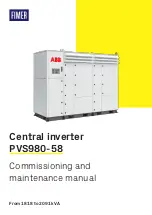
Pulse Output Device
20
Get the latest PDF manual:
https://www.lcmeter.com/resources/technical/manuals
Mobile/online version of this manual:
https://www.lcmeter.com/manuals
must be engaged five (5) full threads into the female hub on the POD to meet explosion proof
requirements.
When installing in a Division 2 location, use either rigid conduit, flexible conduit, or no conduit.
When no conduit is used, the instrument cable must be brought into the POD conduit hub
using a cable gland to seal the wiring to maintain the Enclosure NEMA 4X rating. Regardless
of the type of connection used, thread sealant should be applied to prevent moisture from
getting into the POD electrical housing.
OBSERVE NATIONAL & LOCAL CODES
North America
– Installations must be in full accordance with the National
Electrical Code (US) or the Canadian Electrical Code respectively to maintain the
hazardous location ratings on the product.
Outside of North America
– Installations must be in full accordance with EN
60079-14 to maintain the hazardous location ratings on the product. Use Ex d
certified cable glands only. For ambient temperatures above 70ºC, use field
wiring rated 20ºC above the maximum ambient temperature.
WIRING CABLE
Multi-wire cable with an overall shield is recommended for POD wiring. If individual wires are
used, they must be in a flexible metal conduit and must not be run with any other cables or
wires. Use individual wires between 16 and 20 AWG or shielded cable no less than 22 AWG.
Cable runs up to 5,000 ft (1,524 m) are possible, however cable runs over 1,000 ft (304.8 m)
should use lower AWG wire to reduce the IR voltage drop and the inter-wire capacitance. In
addition, long runs may require a lower value pull-up resistor (due to the additional cable
capacitance that the pulser must drive). Cable that has a metalized foil plastic shield with a
drain wire is recommended over cable with woven shields because it is easier to terminate the
drain wire type cable.
TERMINAL BLOCK
Removing the cover of the POD will expose a 4–position terminal block for connection to an
electrical system. The terminal block can be unplugged from the board for ease of wiring. Pull
it straight up to remove.




































